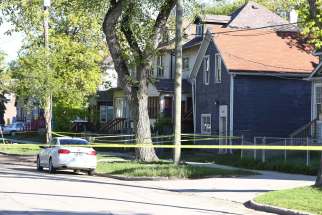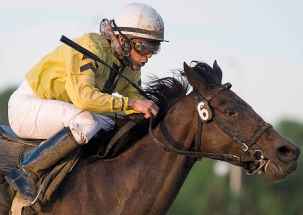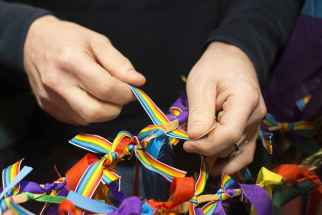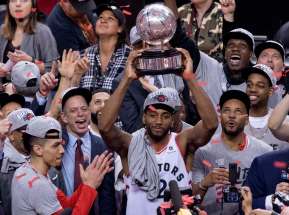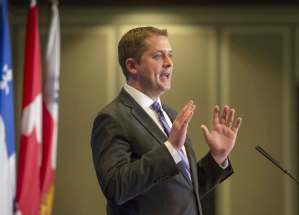The fierce and brave two-spirit peoples are changing the world
Read this article for free:
or
Already have an account? Log in here »
To continue reading, please subscribe:
Monthly Digital Subscription
$1 per week for 24 weeks*
- Enjoy unlimited reading on winnipegfreepress.com
- Read the E-Edition, our digital replica newspaper
- Access News Break, our award-winning app
- Play interactive puzzles
*Billed as $4 plus GST every four weeks. Offer only available to new and qualified returning subscribers. Cancel any time.
Read unlimited articles for free today:
or
Already have an account? Log in here »
Hey there, time traveller!
This article was published 27/05/2019 (2108 days ago), so information in it may no longer be current.
On Jan. 2, 1801, fur trader Alexander Henry met an Anishinaabe named Ozawwendib, who confused him.
As Henry described in his journal: “This person is a curious compound of man and woman. He is a man both as to his members and his courage, but pretends to be womanish, and dresses as such. His walk and mode of sitting, his manners, occupations, and language are those of a woman.”
Years later, American trader John Tanner met Ozawwendib on the shores of the Red River, near Pembina., N.D. Referring to her as “one of those who make themselves women, and are called women by the Indians,” Tanner states Ozawwendib expressed a romantic interest in him — until he failed to kill a moose.
In his travel journal, ethnologist Henry Schoolcraft remarked what an amazing guide Ozawwendib was.
It appeared everyone who met Ozawwendib learned something. For western traders such as Henry and Tanner, though, her identity and sexuality were her main defining features. Schoolcraft’s observations show us Ozawwendib’s skills and role in Anishinaabeg society made her undefinable.
By all accounts, Ozawwendib lived without shame, apology or fear. She thrived as an Anishinaabe, living with tremendous agency over her body, identity, and definition.
Today, people might call Ozawwendib gay, transsexual, homosexual, or queer. These aren’t words we traditionally use in Anishinaabeg society; such categories are often used to denote someone’s sexuality, while Anishinaabe identity is more than that.
A more accurate name is niizh-manidoowag, or two-spirit — a term founded at the third Native American/First Nations Gay and Lesbian Conference in Winnipeg in 1990, describing a person with both a masculine and a feminine spirit.
Two-spirit people have not only experienced homophobia, biphobia and transphobia but anti-Indigenous practices and policies over the past 150 years.
Two-spirit is multiplicity itself, irreducible to binaries in biology and gender; it’s like an identity that constantly moves and shifts. “Two-spirit can also be seen as a spirit name,” says Albert Mcleod, co-founder of Two-Spirited People of Manitoba Inc.
Two-spirit identities, from the past to today, do more work in our communities then almost anyone. Two-spirit peoples take care of water (often considered women’s work), create fire (men’s work), while also teaching children, guiding newcomers, and leading communities.
In virtually every aspect of Indigenous life, from ceremonies to families to governments, two-spirit peoples play key roles.
“We lived openly in our tribes,” two-spirit Northern Paiute writer Randy Burns says in 1988’s Living the Spirit: a Gay American Indian Anthology. “Our families and communities recognized us and encouraged us to develop our skills. In turn, we made special contributions to our communities.”
Today, two-spirit peoples gift our communities with some of the greatest teachings in Indigenous life. They carry responsibilities to create relationships with the land, in community, and via the stories they tell.
Two-spirit peoples perform specific duties, including medicine collecting, funerals, marriages, and carry teachings in dances, songs, and artistic traditions (such as beadwork and powwow regalia).
There are special ceremonies that honour two-spirit teachings, such as at the third annual Two-Spirit Powwow, taking place Saturday at The Forks, as a part of the Pride Winnipeg Festival.
At the same time, two-spirit people have not only experienced homophobia, biphobia and transphobia but anti-Indigenous practices and policies over the past 150 years. Two-spirit peoples therefore are some of the most marginalized groups in Canada — not just in non-Indigenous society.
(I remember one elder telling me years ago, “There is no room for gay people in our ceremonies.” I’ve often wondered where that view came from, as the historical record tells otherwise.)
Today, as before, Indigenous two-spirit peoples are changing the world.
Some of the most important Indigenous writers today are two-spirit, such as Chrystos, Daniel Heath Justice, Gregory Scofield, and Qwo-Li Driskill.
(Some brilliant new voices worth checking out are Anishinaabe/Tsagli/Métis poet Gwen Benaway, Cree scholar Billy-Ray Bellecourt, and Ojibwa-Cree writer Ma-Nee Chacaby. I’m reading Peguis First Nation member Joshua Whitehead’s Jonny Appleseed, which was short-listed for a 2018 Governor General’s Award.)
Two-spirit artists such as painter Kent Monkman, cellist Cris Derksen, and singer Jeremy Dutcher (who won the 2018 Polaris Prize) are internationally-known.
For many, they are not only Indigenous faces but faces for Canada on the world stage.
The history of two-spirit peoples in our community and North America is showcased in a new archival collection established at the University of Winnipeg. Launched this week, it’s said to be the most comprehensive collection of two-spirit books, photographs and articles in Canada, donated by Albert Mcleod — who had been collecting materials for 40 years.
“Many Indigenous societies embraced their two-spirit citizens and held them in high regard,” he says, “so it is understandable that we would see this resurgence now. This archive proves this.”
At the Pride Winnipeg Festival (which started May 24 and runs through Sunday), you’ll be seeing a very old tradition: two-spirit peoples being brave, fierce, and committed to the complexity of Anishinaabeg.
These are warriors, protectors, and lovers who will be with us for as long as Indigenous communities continue.
niigaan.sinclair@freepress.mb.ca

Niigaan Sinclair
Columnist
Niigaan Sinclair is Anishinaabe and is a columnist at the Winnipeg Free Press.
Our newsroom depends on a growing audience of readers to power our journalism. If you are not a paid reader, please consider becoming a subscriber.
Our newsroom depends on its audience of readers to power our journalism. Thank you for your support.
History
Updated on Tuesday, May 28, 2019 11:12 AM CDT: changes word only to main



